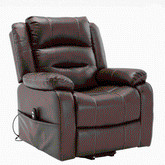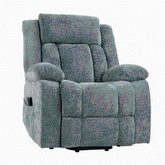Revolutionize Your Workspace: The Power of Ergonomics Office Furniture in South Africa
Why Ergonomics in the Workplace Matter: Health and Efficiency
The Science of Ergonomics and Its Impact on Productivity
Ergonomics is the science of making work comfortable and efficient. It's about fitting the job to the worker, not the other way around. In South Africa, more companies are seeing the value of ergonomics.

Good ergonomics can boost productivity. When workers are comfortable, they can focus better. They don't get distracted by pain or discomfort. This means they can work faster and make fewer mistakes.
Studies show that ergonomic workspaces can increase output by up to 25%. That's a big gain for any business. It's not just about working harder, but working smarter.
Ergonomics also helps reduce fatigue. When your body is in a good position, you use less energy. This means you can work longer without getting tired. It's especially important for jobs that involve sitting for long periods.
In South Africa, where competition is fierce, ergonomics can give companies an edge. It's a simple way to get more from your workforce without pushing them too hard.
How Ergonomic Furniture Can Reduce Workplace Injuries
Ergonomic furniture is a key player in preventing workplace injuries. These injuries can be costly for South African businesses. They lead to lost work days and high medical bills.
Ergonomic chairs are a good example. They support the spine's natural curve. This reduces the risk of back pain, a common office complaint. Adjustable desks allow workers to switch between sitting and standing. This movement can prevent problems like stiff muscles and poor circulation.
Keyboard trays and ergonomic mice help too. They keep wrists in a natural position. This lowers the risk of carpal tunnel syndrome. It's a big issue for people who type a lot.
Even small changes can make a big difference. Footrests can improve posture and reduce leg strain. Monitor stands can prevent neck pain by keeping screens at eye level.
By investing in ergonomic furniture, South African companies can create safer workplaces. This leads to healthier, happier employees and lower costs in the long run.
The Ultimate Guide to Ergonomic Office Furniture in South Africa
Finding the Right Ergonomic Chair for Your Body
Choosing the right ergonomic chair is crucial for comfort at work. In South Africa, there are many options to choose from. The key is to find a chair that fits your body and work style.

Look for chairs with adjustable features. These should include:
- Seat height
- Backrest tilt
- Lumbar support
- Armrest height and width
When trying chairs, sit in them for at least 15 minutes. This will give you a good feel for the comfort level. Pay attention to how your back feels during this time.
Consider the material of the chair. South Africa can get hot, so breathable fabrics are best. Mesh backs provide good airflow. Leather or vinyl might be less comfortable in warm weather.
Don't forget about durability. South African professionals often work long hours. Choose a chair that can stand up to daily use. Look for chairs with good warranties.
Price is important, but don't skimp on quality. A good chair is an investment in your health and productivity. It's worth spending a bit more for something that will last and keep you comfortable.
Essential Ergonomic Accessories for the South African Workspace
Ergonomic accessories can greatly improve your work setup. Here are some must-haves for South African professionals:
- Ergonomic keyboard: Reduces wrist strain and improves typing comfort.
- Vertical mouse: Keeps your wrist in a natural position to prevent pain.
- Monitor stand: Raises your screen to eye level, reducing neck strain.
- Footrest: Improves circulation and reduces pressure on your lower back.
- Desk pad: Provides a soft surface for your wrists while typing or using a mouse.
These items are widely available in South Africa. You can find them in office supply stores or online. Investing in these accessories can make a big difference in your comfort at work.
Remember to adjust these accessories to fit your body. One size does not fit all in ergonomics. Take the time to set up each item correctly for maximum benefit.
Some accessories, like standing desk converters, can be pricey. But many are quite affordable. Start with the basics and add more as you can. Your body will thank you in the long run.
The Role of Lighting and Layout in Ergonomic Design
Lighting and layout are key parts of ergonomic design. In South Africa, where natural light varies, good lighting is crucial. It reduces eye strain and headaches. It also boosts mood and productivity.
Aim for a mix of natural and artificial light. Put desks near windows when possible. Use adjustable task lights for detailed work. Avoid harsh overhead lights that cause glare on screens.
Layout is just as important. A well-designed office promotes movement and teamwork. Consider these tips:
- Create clear paths between workstations
- Put shared equipment in easy-to-reach areas
- Use standing desks or high tables for quick meetings
- Provide quiet zones for focused work
In South Africa's often crowded urban offices, using space well is key. Modular furniture can help create flexible layouts. This allows for easy changes as needs shift.
Remember, good layout design thinks about both individual and team needs. It should support different work styles and tasks. A well-planned office can boost both comfort and efficiency.
Maximizing Efficiency with Ergonomic Solutions
The Link Between Ergonomics and Workplace Morale
Ergonomic workspaces do more than prevent injuries. They also boost workplace morale. When employees feel comfortable, they're happier at work. This leads to better job satisfaction and lower turnover rates.

In South Africa, where workplace stress is common, ergonomics can make a big difference. Comfortable workspaces show that companies care about their staff. This can increase loyalty and motivation.
Ergonomic solutions also promote better teamwork. When people are comfortable, they're more likely to collaborate. This can lead to improved communication and creativity within teams.
Companies that invest in ergonomics often see a positive return. Happy employees are more productive. They take fewer sick days and produce higher quality work. This benefits both the workers and the business.
In the competitive South African job market, good ergonomics can be a selling point. It can help companies attract and keep top talent. People want to work in places that care about their well-being.
Innovative Ergonomic Furniture Designs for Small Spaces
South African offices often face space challenges. This has led to creative ergonomic furniture designs. These solutions maximize comfort in small areas.
Some examples include:
- Folding desks that can be tucked away when not in use
- Multi-use furniture that serves as both storage and workspace
- Adjustable monitor arms that free up desk space
- Compact, stackable chairs for flexible seating
These designs are perfect for small home offices or co-working spaces. They allow professionals to create ergonomic setups in tight spots. This is especially useful in urban areas where space is at a premium.
Look for furniture that is both functional and space-saving. Many South African retailers now offer these innovative designs. They cater to the growing need for ergonomic solutions in small spaces.
When choosing furniture, think about your daily tasks. Pick pieces that support your work style. Even in small spaces, you can create a comfortable and efficient workspace.
Implementing Ergonomic Solutions for Enhanced Workplace Performance
Implementing ergonomic solutions requires a smart approach. Start by looking at your current workspace. Find areas that need improvement. This could be anything from chair quality to lighting conditions.
Next, prioritize changes based on impact and budget. Some low-cost, high-impact changes include:
- Adjusting monitor heights
- Providing ergonomic keyboards and mice
- Improving lighting with task lamps
- Encouraging regular breaks and stretching
For bigger changes, consider hiring an ergonomics expert. They can provide custom solutions for your office. This is especially helpful for larger companies in South Africa.
Train employees on how to use ergonomic equipment properly. The best furniture won't help if it's not used right. Regular workshops can help staff maintain good habits.
Finally, measure the impact of your ergonomic changes. Track things like productivity, sick days, and employee satisfaction. This data can help justify more investments in ergonomic solutions.
Remember, creating an ergonomic workspace is an ongoing process. Regular checks and adjustments are key to maintaining a healthy, efficient work environment. With the right approach, South African businesses can create workspaces that boost both comfort and productivity.




